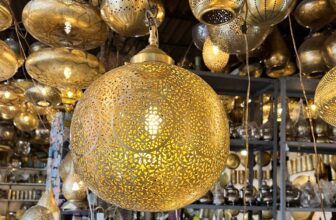
There are a few different types of antiques, which can generally be broken down into two categories: functional and decorative. Functional antiques are items that were originally created for a specific purpose, such as a chair or a table, while decorative antiques are pieces that were created solely for their aesthetic value, such as a painting or a sculpture.
Another way to categorize antiques is by their age. Antiques can be either vintage or antique, with vintage referring to items that are at least 20 years old, and antique referring to items that are at least 100 years old.
Finally, antiques can also be classified by their type of material. This can include items made from metal, wood, glass, or ceramic, among others.
Functional antiques
Functional antiques are those objects that were originally created for a specific function and were once used in the course of everyday life, but have since been retired from use, and are now considered decorative items. While some people may consider functional antiques to be relics of a bygone era, others find great beauty and interest in these items precisely because they were once used in everyday life.
Functional antiques can be found in a variety of forms, including furniture, kitchenware, tools, and even clothing. Many times, functional antiques are made from materials that were popular at the time they were originally used, such as wood, metal, and glass.
There are functional antiques furniture pieces that are still in use even after many years because of their unique and practical design. Unlike other pieces of furniture that gather dust in the attic, functional antiques are still utilized in many homes today because of their many benefits.
Functional antiques are popular among collectors because they are not only beautiful, but also useful. In many cases, functional antiques are still in production today, so they can be easily purchased online or in stores. Additionally, functional antiques are often less expensive than other types of antiques, making them a more affordable option for collectors.
People who are interested in functional antiques often enjoy collecting them, and there are many places where they can be found. Antique shops, flea markets, and online auctions are all great sources for functional antiques.
There are many different types of functional antiques, including furniture, mirrors, lamps, and vases, chairs and tables.
The most common type of functional antique is a chair. A chair is functional because it is designed to provide comfort and support for the person sitting in it. Chairs also come in a variety of shapes and sizes, so it can be easily customized to fit any room. Plus, chairs are often made from durable materials, such as wood or metal, so they can last for many years.
Another common type of functional antique is a table. A table is functional because it is designed to provide a surface for people to eat or work at. Tables also come in a variety of shapes and sizes, so it can be easily customized to fit any room. Plus, tables are often made from durable materials, such as wood or metal.
There are a few things to keep in mind when collecting functional antiques. First, it is important to make sure that the object is still safe to use. Second, it is important to be aware of the object’s original function, and to make sure that it is still being used for that purpose.
Decorative Antiques
Decorative Antiques are pieces of art and objects that has been used for decorative purposes. Decorative Antiques also describes furniture and other objects that have been around for many years and are no longer used for their original purpose. Many people collect decorative antique items because they are unique and often have a lot of history behind them.
There are many types of decorative antiques, including paintings, sculptures, furniture, and jewelry. Each piece is unique and can be worth a lot of money, depending on its age, rarity, and condition. Some decorative antiques are extremely valuable and can even be worth more than the original building or home they were used in.
Decorative antiques can be classified in a variety of ways, but one of the most common ways to categorize them is by their era of origin. This can be broken down in to a few main categories: ancient, medieval, renaissance, baroque, rococo, and neoclassical.
Ancient decorative antiques are those that originate from before the Common Era, often from cultures in Europe, Asia, and the Middle East. Pieces from this period can be incredibly ornate and detailed, featuring carvings and sculptures of intricate designs.
Medieval decorative antiques come from the period between the fall of the Roman Empire and the Renaissance. They are characterized by their heavy, dark woodwork and often religious motifs.
Renaissance decorative antiques are from the fifteenth to seventeenth centuries, and are noted for their revival of classical styles from antiquity. Pieces from this period are often brightly colored and elaborately carved, with intricate details in the woodwork and metalwork. Renaissance decorative antiques are popular among collectors and decorators for their beauty and historical significance.
Baroque decorative antiques are a type of antique that is characterized by its ornate and elaborate style. Baroque decorative antiques can include furniture, art, and other objects that were made during the baroque period, which lasted from the 1600s to the 1700s.
Rococo decorative antiques offers a wide variety of unique and beautifully crafted pieces from the 18th century. each item is a true work of art, and each has a unique story to tell. our collection includes furniture, paintings, sculpture, and more, all of which are sure to add a touch of elegance to any room.
Neoclassical decorative antique furniture is a type of furniture that is inspired by the classical period of Greece and Rome. This type of furniture is often characterized by its simple lines and elegant shapes. Neoclassical furniture is often made from high-quality materials, such as marble, wood, and bronze.
If you’re interested in collecting decorative antiques, it’s important to learn about the different types and how to identify them. You should also be familiar with the different prices they can fetch and how to properly store and care for them.






